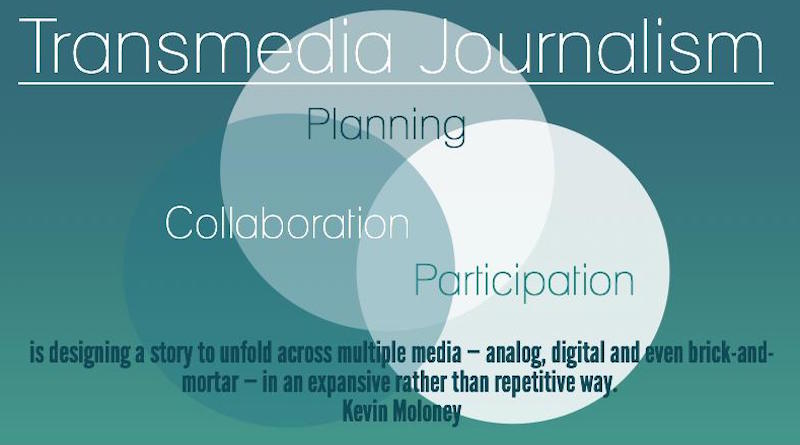Using transmedia journalism techniques in student publications
 If you haven’t heard it before, the concept of transmedia journalism is intriguing with unique applications to scholastic newsrooms. The original concept of transmedia is storytelling that uses multiple media platforms to tell a narrative over time, where the pieces fit together to create a larger and fully participatory narrative (think the Star Wars universe, where movies, books, action figures, fan fiction, clothing, graphic novels, theme park attractions, etc., combine to tell the epic story).
If you haven’t heard it before, the concept of transmedia journalism is intriguing with unique applications to scholastic newsrooms. The original concept of transmedia is storytelling that uses multiple media platforms to tell a narrative over time, where the pieces fit together to create a larger and fully participatory narrative (think the Star Wars universe, where movies, books, action figures, fan fiction, clothing, graphic novels, theme park attractions, etc., combine to tell the epic story).
However, when I first read about the idea of transmedia as applied to journalism, I pictured it as a developed concept of convergence. It’s more than that. Instead of working inside the legacy media concept of one-to-many for news delivery, it asks journalists to be comfortable with a many-to-many paradigm. It’s novel as an application to journalism, yet it’s ancient – found in both the rich traditions of early cultures as well as successful, multi-platform Hollywood blockbusters.
Perhaps the best way to describe transmedia is using visual psychology – namely, the Gestalt Theory: the whole is more than the sum of its parts. Transmedia not only tells stories across various platforms and channels, it also brings the reader/viewer into the role of valued collaborator. The more voices, the better.
Kevin Moloney of the University of Colorado at Boulder is one of the voices bringing transmedia to media studies. Although his view is beautifully expansive (multiple journalists telling multiple stories on multiple platforms, as well as interacting openly with their respective publics), it is slightly unrealistic for the scholastic realm. However, we can use some transmedia principles to push our students toward the next media metamorphosis.
- Planning: More than just cool technology, the heart of transmedia is that it’s meticulously planned. This type of multimodal storytelling is not suitable (or even vaguely possible) for most stories, but there are some in your school or community that require in-depth treatment and exploration. It’s like a maestro concept for convergence, where a small group of student journalists brainstorms how to tell various aspects of the story in the best possible way (instead of the way they know best).
- Collaboration: We all exist in isolation within our schools, but we aren’t alone. This in-depth storytelling necessitates joining with other school’s staffs (the away and home team?) and professional journalists (local newspapers/TV/radio) to tell a fuller story, rather than the trend of “backpack” or all-in-one journalists. The partnership with other media allows each group to play to its strengths.
- Participation: At its heart, transmedia journalism is audience engagement beyond the surface; it’s not just polls and clickbait for increased readership, but the courting of actual reader views, opinions, sightings, and experiences to expand the narrative. It’s intensely non-linear, but reminds us that no story is ever really complete.
Although I still believe trained journalists are vital, as is the Fourth Estate in a democracy, these are tools that can be used to tell the most robust story possible – one that may create social change along with more informed communities. Isn’t that worth a little experimentation?
Examples of Transmedia Jouranlism:






Pingback:Let them see it again! Curate, invite engagement with previous content | JEADigitalMedia.org